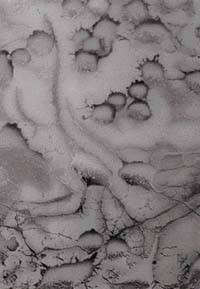Way to go!
 many organisms, such as bacteria and a variety of microbes, live as single cells. Others live in groups, and the cells that make up our bodies constitute a good example of these. In either case, a cell has to be able to sense its surroundings if it is to get by in the world. For a single cell, the most important problem might be to tell where to go to get food, and what places to avoid. The cells in our body need to know who their neighbours are; and, once they make sure they are in the correct neighbourhood, they need to be able to sense precisely where they are situated in relation to the rest.
many organisms, such as bacteria and a variety of microbes, live as single cells. Others live in groups, and the cells that make up our bodies constitute a good example of these. In either case, a cell has to be able to sense its surroundings if it is to get by in the world. For a single cell, the most important problem might be to tell where to go to get food, and what places to avoid. The cells in our body need to know who their neighbours are; and, once they make sure they are in the correct neighbourhood, they need to be able to sense precisely where they are situated in relation to the rest.
This knowledge is essential if the cell is to perform its appropriate role within a tissue and the tissue, within the organism as a whole. So how do cells do all this? The most primitive sensory capability that they possess is the chemical sense, and among chemical senses, none is more fundamental than that which tells a cell towards which direction to move. The phenomenon is called chemotaxis, and it is one of the fascinating forms of behaviour displayed by single cells.
The fundamental problem in chemotaxis is: given that the cell itself is very small
Related Content
- First food: business of taste
- Joint committee report on pollution of Chandlai lake, Jaipur, Rajasthan, 21/11/2024
- Judgment of the National Green Tribunal regarding pollution by Nectar Life Sciences Limited, Sahibzada Ajit Singh Nagar, Punjab, 21/11/2024
- Judgment of the National Green Tribunal regarding sewage discharge into storm water drains which meet river Yamuna, 21/11/2024
- Status report on behalf of Amicus Curiae on pollution by pulp and paper industry in Muzaffar Nagar, Uttar Pradesh, 20/11/2024
- Order of the National Green Tribunal regarding discharge of untreated water into Jadhav Sagar, Sakhya Sagar and Madhav Sagar lake, Shivpuri, Madhya Pradesh, 19/11/2024
